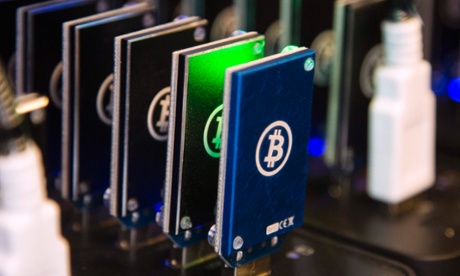
The bitcoin digital currency could be hijacked by “selfish miners” causing honest users to lose time, effort and money.
Due to the way the anonymous, decentralised, peer-to-peer digital currency is produced through complex computational processes, a rogue group of “selfish miners” could hijack the currency and overwrite the shared record of transactions. That would wipe out the bitcoins belonging to honest users and possibly cause a collapse in the currency, say two researchers from Cornell University.
The conditions for that to happen already exist. Ittay Eyal and Emin Gun Sirer, of the computing science department at Cornell University, New York, have worked out that the selfish mining group would need more than a 33% share of the computational power currently being used for generating bitcoins.
Certain groups regularly break 25% of the global collective bitcoin mining power, and some already exceed the 33% share, the duo say.
“The bitcoin ecosystem is open to manipulation, and potential takeover, by miners seeking to maximise their rewards,” Eyal and Gun Sirer say in a recently published paper on the Arxiv site. “The protocol will never be safe against attacks by a selfish mining pool that commands more than 33% of the total mining power of the network.”
Mining: time-consuming and expensive
While most users buy bitcoins from currency exchanges such as Mt Gox, some users produce new ones by “mining”, a process that requires computers to perform the calculations needed to make the digital currency work.
Mining is time-consuming and expensive due to the way the currency is designed. Each bitcoin is more cryptographically complex than the previous one, requiring more computational time to "mine" it, and thus investment in electricity and use of computer hardware.
Once the cryptographic calculation is complete for each bitcoin, a record of that bitcoin is written to a collectively shared ledger called the “blockchain”, which confirms that each bitcoin actually has value and has been correctly mined.
Due to the peer-to-peer nature, only the latest or longest blockchain is recognised as valid - and it is this which poses a security risk, according to the researchers.
Force honest miners into performing wasted computations
Most mining takes place in the open, with each newly produced bitcoin logged immediately in the public record. However, a “selfish” mining group operates by pooling computing resources, writing its newly calculated bitcoins to a private blockchain. Once that private blockchain is released, if it is longer than the publicly available blockchains currently in circulation it will overwrite them, destroying the value of the work done by others in preference to their own mined bitcoins.
“The key insight behind the selfish mining strategy is to force the honest miners into performing wasted computations on the stale public branch. Specifically, selfish mining forces the honest miners to spend their cycles on blocks that are destined to not be part of the blockchain,” wrote the researchers.
In effect, the rogue selfish mining group could claim more bitcoins for themselves, hijacking the currency.
To do that, “higher revenues can lead new rational miners to join selfish miner pools, leading to a collapse of the decentralised currency,” warned the researchers, who proposed a solution that involves mining to random blockchains to eliminate the risk of selfish build up.
• In October, a Norwegian man discovered that his forgotten 2009 $27 investment in bitcoin had increased in value to around $886,000

